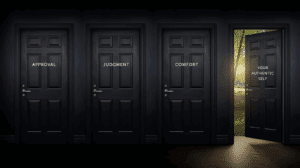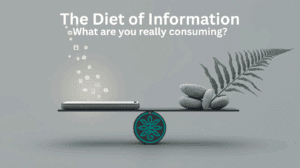Personal transformation is littered with good intentions and failed attempts. We’ve all been there – making resolutions, setting goals, and declaring our commitment to change, only to find ourselves back in familiar patterns weeks or months later. But what if the problem isn’t our willpower, discipline, or even our methods? What if the real issue is that we’re trying to force change before we’re actually ready for it?
In the world of personal and professional development, readiness is the unsung hero of lasting transformation. Yet it’s the step most people skip entirely, rushing headfirst into action without first honestly assessing whether they’re prepared for the journey ahead.
This oversight is precisely why so many change efforts fail – not because people lack capability, but because they haven’t cultivated genuine readiness.
What Readiness Really Means
True readiness for change isn’t about feeling excited or motivated. Motivation is fleeting; readiness runs much deeper. It’s the internal alignment that occurs when your emotional, psychological, and practical resources are genuinely available for the work of transformation.
It’s the difference between wanting something intellectually and being prepared to handle the full reality of what change actually demands.
When we talk about disconnecting from limiting beliefs – those deeply ingrained thought patterns that constrain our possibilities – readiness becomes even more critical. These beliefs often serve as psychological security blankets, providing predictability even when they limit us.
Releasing them requires more than just recognizing they’re unhelpful; it requires being prepared for the discomfort, uncertainty, and identity shifts that follow.
The Anatomy of Readiness
Genuine readiness operates on multiple levels simultaneously.
At the surface level, there’s intellectual readiness – the cognitive understanding that change is necessary and beneficial. This is where most people stop, mistaking intellectual awareness for complete readiness.
But true readiness goes much deeper.
Emotional readiness involves your willingness to experience the full spectrum of feelings that change brings. When you disconnect from a limiting belief, you might feel guilty for “abandoning” a part of yourself that once felt protective. You might feel angry at the time you’ve lost to this belief. You might experience shame about having held onto something that limited you. Emotional readiness means you’re prepared to feel these emotions without being derailed by them.
Then there’s practical readiness – having the actual resources, support systems, and capacity to sustain change efforts. This includes time, energy, social support, and the ability to maintain your change practices even when life gets demanding.
Finally, there’s spiritual or existential readiness – your willingness to question fundamental assumptions about who you are and how the world works. This is perhaps the deepest level, as it involves being comfortable with temporary identity confusion while new aspects of yourself emerge.
The Readiness Spectrum
One of the most important insights about readiness is that it exists on a spectrum, not as a binary yes-or-no state. Understanding where you fall on this spectrum can save you months of frustration and self-criticism.
At the low end of the spectrum (1-3 out of 10), you might intellectually recognize that a belief is limiting but feel emotionally attached to it. The belief might feel like a core part of your identity, or you might experience significant fear about what life would look like without it. This isn’t a failure or weakness – it’s valuable information about what needs attention before change can occur.
In the middle range (4-6), you’re likely experiencing the internal conflict that often precedes readiness. You can see the benefits of change, but you also feel the pull of familiar patterns. You might feel ready in some contexts but not others, or ready on some days but not others. This fluctuation is completely normal and often indicates that readiness is developing.
At the higher end (7-10), there’s an internal drive toward change that feels almost inevitable. The limitations of your current patterns have become uncomfortable enough that staying the same feels harder than changing. You can visualize specific benefits of releasing old beliefs and feel genuinely excited about new possibilities.
The Readiness Questions That Change Everything
The most powerful way to assess readiness is through honest self-inquiry. Simple questions can reveal profound truths about your preparedness for change.
When you imagine a friend struggling with your exact limiting belief, what advice would you give them? Often, we can see clearly for others what we can’t see for ourselves, and this perspective reveals our deeper wisdom.
Envisioning your life without the limiting belief is equally revealing. If you can paint a vivid, compelling picture of this alternative reality, you’re likely building the emotional motivation necessary for change. If the picture feels vague or scary, you might need more time to develop this vision.
Perhaps most importantly, examining your fears about disconnecting from the belief often reveals the real work that needs to be done. What scares you about letting go? These fears aren’t obstacles to overcome – they’re information about what support, skills, or preparation you need before proceeding.
The Cost of Ignoring Readiness
When we attempt change without genuine readiness, we set ourselves up for a predictable cycle of failure and self-criticism.
We start strong, encounter the inevitable challenges, and then interpret our struggle as evidence that we’re not capable of change. This creates a negative feedback loop that actually decreases our readiness for future change attempts.
Worse, failed change attempts can strengthen the very beliefs we’re trying to release. Each time we “fail,” the belief gets to say, “See? I told you that you couldn’t do it. You need me.”
This is why taking time to properly assess and cultivate readiness isn’t just helpful – it’s essential for long-term success.
Cultivating Readiness
The beautiful thing about readiness is that it can be developed. If your honest assessment reveals that you’re not quite ready for a particular change, this becomes your starting point rather than a dead end.
You can work on building emotional tolerance, developing support systems, or deepening your understanding of why change matters to you.
Sometimes cultivating readiness means spending more time with the current reality, fully experiencing how the limiting belief constrains you until the discomfort motivates genuine change. Other times it means building the practical resources and skills you’ll need to sustain new patterns.
True readiness isn’t about being perfect or having no fears.
It’s about being honest about where you are and prepared for where you’re going. When you honor your actual level of readiness rather than pushing through prematurely, you give yourself the gift of sustainable change – transformation that lasts because it was built on a foundation solid enough to support it.
The next time you find yourself eager to make a change, pause first and ask: “Am I truly ready for this?” Your honest answer might be the most important step you take toward lasting transformation.








